
Roots
The quiet hum of life, often overlooked, holds secrets to profound well-being. For those with coiled hair, this sentiment extends to the very strands that crown their heads. The journey toward serene, hydrated coils often begins not with a new product, but with a deeper understanding of hair’s elemental nature and its delicate relationship with its surroundings. This understanding invites us to look beyond surface-level concerns and delve into the fundamental physics and inherent structure that dictate how our hair lives, breathes, and holds onto the moisture it so deeply desires.
Consider the individual strand of hair, a marvel of biological engineering. Each one, a slender cylinder, is composed of three primary layers ❉ the medulla, the cortex, and the cuticle. The outermost layer, the Cuticle, resembles overlapping shingles on a roof. These scales, when healthy and lying flat, create a smooth surface that reflects light and, critically, acts as a protective barrier, sealing moisture within the hair shaft.
For coiled hair, this architectural arrangement is particularly intricate. The very curvature of the strand means these cuticle scales are not uniformly aligned, creating inherent points of lift and exposure even in their healthiest state. This structural reality makes coiled hair more susceptible to external aggressors, especially friction.
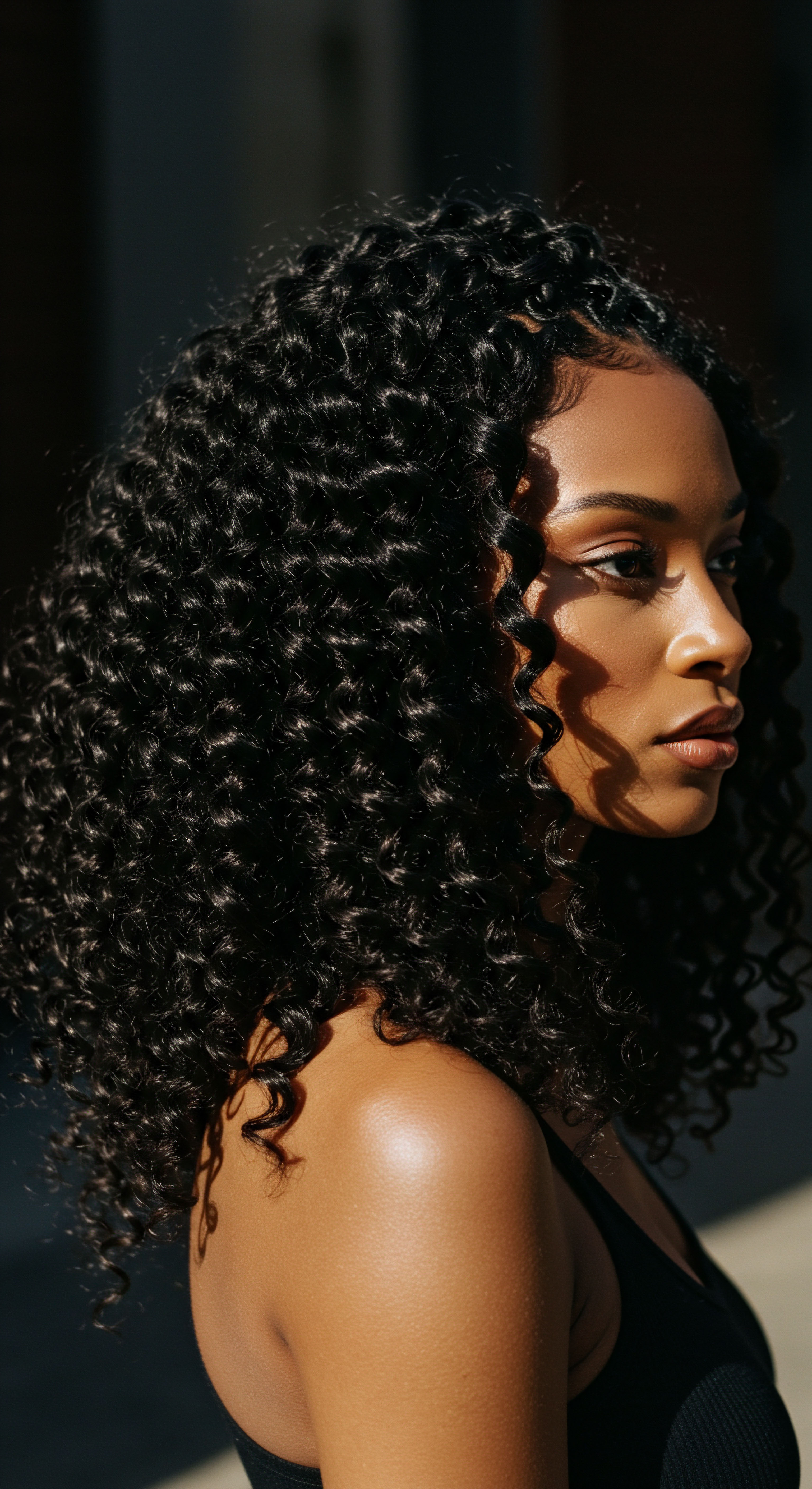
The Architecture of Coiled Hair
Coiled hair, with its characteristic spirals and tight turns, presents a unique surface topography. Unlike straight strands, which offer a relatively consistent, smooth plane, coiled hair constantly presents different angles and elevations. This geometry naturally increases the surface area exposed to contact, whether from styling tools, clothing, or even air movement. When these delicate cuticles encounter resistance, they can lift, chip, or even break.
This disruption creates microscopic openings, much like tiny cracks in a protective seal. Through these openings, precious moisture, the lifeblood of supple coils, can escape, leaving hair feeling dry, brittle, and prone to breakage.
The unique curvature of coiled hair inherently increases its susceptibility to external friction, impacting cuticle integrity and moisture retention.
The very act of living – sleeping, moving, styling – introduces mechanical forces that interact with hair. These forces, often subtle, accumulate over time, leading to cumulative wear. The impact of friction on hair’s integrity is a subject of ongoing scientific inquiry. For instance, a study examining the tribological properties of hair fibers demonstrated that even under relatively low compressive normal loads, repeated contact can lead to substantial cuticle wear and fiber damage.
When hair fibers were subjected to 100 mN compressive normal loads, significant cuticle damage was observed. This highlights the mechanical vulnerability of hair, especially when subjected to consistent, abrasive interactions.
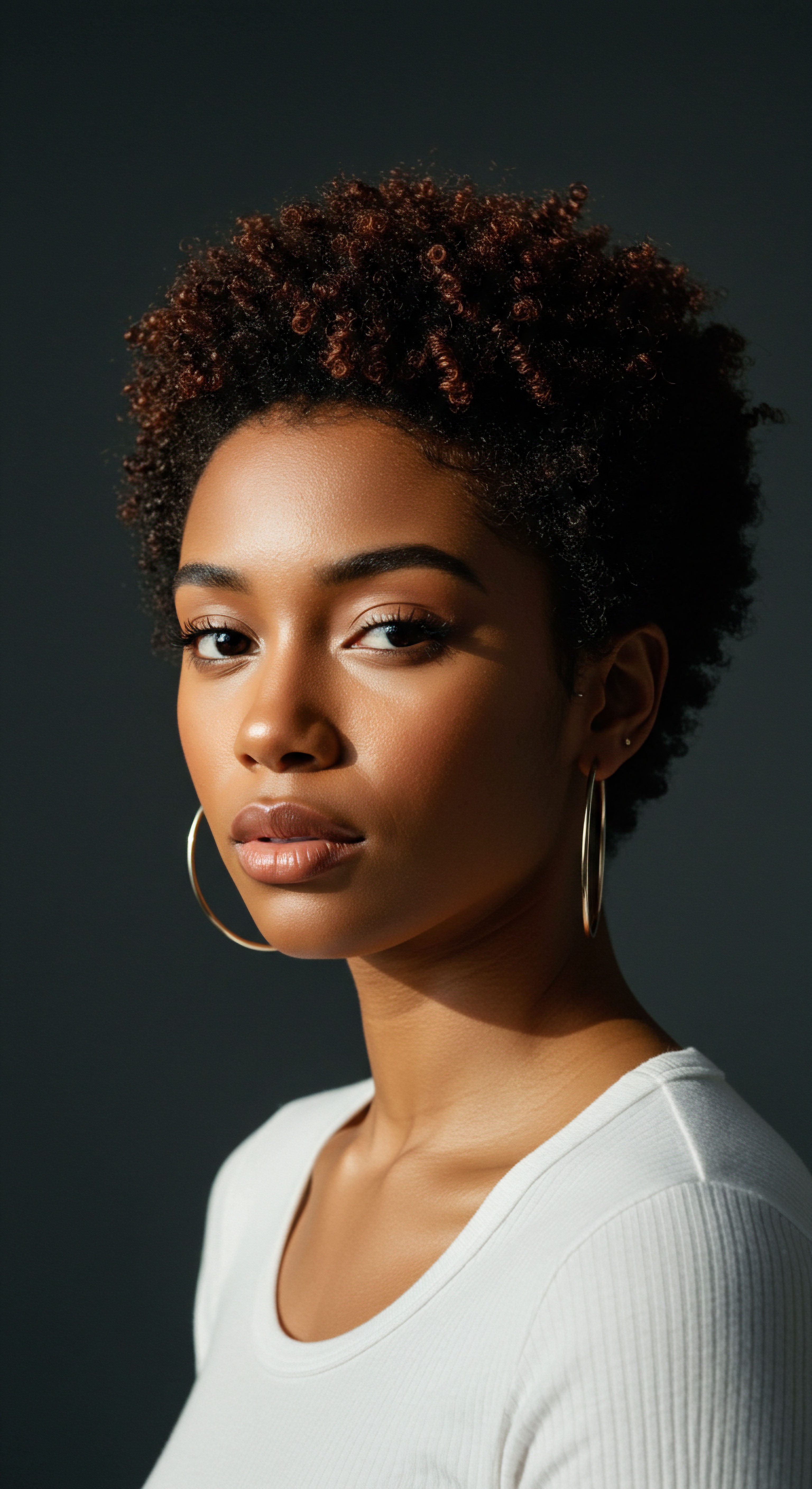
Understanding Hair’s Moisture Dynamics
Moisture retention in hair is a delicate equilibrium. Hair, being a hygroscopic material, readily absorbs and releases water depending on the surrounding humidity. For coiled hair, which tends to be naturally drier due to the winding path sebum must travel from the scalp, retaining moisture is paramount.
When the cuticle layer is compromised by friction, this natural moisture balance is disturbed. The hair’s ability to hold onto water molecules diminishes, leading to a cascade of undesirable outcomes, including dryness, reduced elasticity, and increased likelihood of tangling.
The concept of Differential Friction Effect (DFE) further illuminates this. Hair, particularly healthy hair, exhibits a lower friction coefficient when rubbed in the direction of the cuticle scales (root to tip) compared to against them (tip to root). When cuticles are raised or damaged by friction, this differential effect is reduced, leading to increased overall friction, which then makes hair more prone to tangling and resistance during combing. This creates a vicious cycle ❉ friction causes damage, which increases friction, leading to further damage and moisture loss.
| Layer Cuticle |
| Description Outermost, overlapping scales |
| Function Protective barrier, controls moisture exchange, provides shine |
| Layer Cortex |
| Description Middle layer, fibrous proteins |
| Function Determines hair's strength, elasticity, and color |
| Layer Medulla |
| Description Innermost core, sometimes absent |
| Function May play a role in hair's mechanical properties, not fully understood |
| Layer Understanding these layers is fundamental to comprehending hair health and moisture dynamics. |
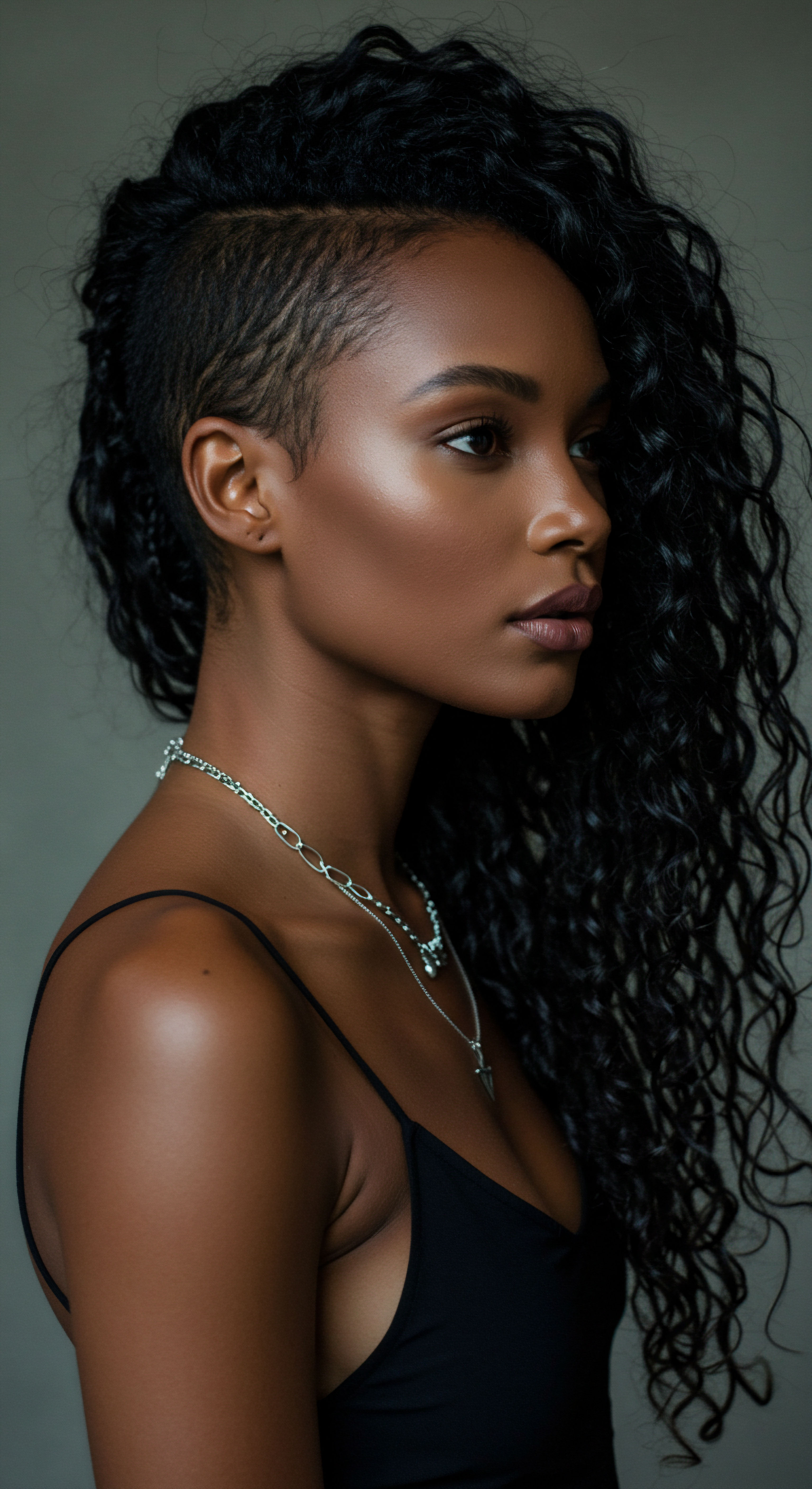
Can Hair Be Too Dry for Friction?
One might wonder if extremely dry hair, lacking moisture, would exhibit less friction. Paradoxically, the opposite often holds true. While water can act as a lubricant, making hair feel smoother when wet, excessive dryness can lead to a rougher surface. When hair lacks sufficient internal hydration, the cuticle scales can become brittle and stand away from the hair shaft, creating a more uneven, abrasive texture.
This increased surface roughness can then lead to higher friction coefficients, especially when hair rubs against itself or external surfaces. The interaction becomes less of a gentle glide and more of a resistant drag, exacerbating the problem of moisture loss.
The pursuit of vibrant, hydrated coils is not merely about external application of moisture; it begins with respecting the inherent design of the hair strand. Protecting the cuticle, minimizing mechanical stress, and understanding the subtle interplay of friction and hydration are foundational steps toward cultivating truly thriving hair.

Ritual
Stepping from the quiet contemplation of hair’s intrinsic design, we arrive at the realm of daily practices, the rhythm of care that shapes our hair’s vitality. The question of whether reducing hair friction truly improves moisture retention for coils finds its practical answer in the conscious choices we make, from the tools we select to the bedtime routines we honor. This is where scientific understanding meets the gentle hand of tradition, transforming routine into a purposeful ritual of preservation.
The notion of friction often conjures images of harsh rubbing, yet its impact on coiled hair can be far more subtle and pervasive. Consider the simple act of drying hair after cleansing. Many instinctively reach for a terrycloth towel, vigorously rubbing away excess water. This seemingly innocuous habit, however, can be a significant source of mechanical stress.
The looped fibers of a conventional towel create a rough surface that snags and pulls at the delicate cuticle scales of coiled hair, disrupting their smooth alignment. This abrasive action lifts the cuticles, creating pathways for moisture to escape and leaving the hair rough, frizzy, and vulnerable.

Selecting Gentle Instruments
The tools we employ are extensions of our hands, and their impact on hair friction cannot be overstated. Replacing harsh implements with gentler alternatives is a tangible step toward moisture preservation.
- Microfiber Towels ❉ Unlike traditional terrycloth, microfiber towels feature a smoother, finer fiber structure that absorbs water with less abrasive contact. Patting or gently squeezing hair with a microfiber towel, rather than rubbing, significantly reduces cuticle disturbance.
- Cotton T-Shirts ❉ An accessible and often surprising alternative, a soft cotton t-shirt can serve as an excellent hair-drying tool. Its flat, smooth surface minimizes snagging and glides over the hair more kindly than rougher towel textures.
- Wide Tooth Combs ❉ Detangling coiled hair, particularly when wet, is a common source of friction. Using a wide-tooth comb, starting from the ends and working upwards, helps to gently separate strands without undue pulling or breakage. This method minimizes the force exerted on individual hair fibers, preserving their integrity and moisture.
The act of styling also contributes to friction. Brushing dry coiled hair, for instance, can generate significant friction and static electricity, leading to raised cuticles and moisture loss. A study on hair damage highlighted that fabrics with rougher surfaces, such as towels, cause more cuticle breakage than finer-woven fabrics like a cotton t-shirt. This directly supports the practice of using softer materials for hair drying.
Conscious choices in hair tools and practices, from drying to detangling, directly influence the reduction of friction and subsequently, moisture retention.

The Nighttime Sanctuary
Perhaps one of the most underestimated arenas of hair friction is sleep. As we shift and turn throughout the night, our hair rubs against pillowcases, often made of cotton. Cotton, while comfortable for skin, possesses absorbent properties that draw moisture away from hair. Its relatively rough surface also creates constant friction, leading to tangles, breakage, and the dreaded “bed head.” This nightly abrasion contributes significantly to cumulative cuticle damage and moisture depletion.
Switching to silk or satin pillowcases and bonnets offers a profound shift in this dynamic. Silk, a natural protein fiber, boasts an exceptionally smooth surface that allows hair to glide effortlessly, minimizing friction. Research indicates that silk pillowcases can reduce hair friction by up to 43% compared to other materials.
This significant reduction in friction helps to keep the cuticle scales flat, preserving the hair’s natural oils and, critically, its moisture. Satin, a synthetic alternative with a similar smooth feel, also provides a notable reduction in friction, offering a more accessible option for many.

Why Does Material Choice Matter Overnight?
The distinction between materials extends beyond just smoothness. Cotton’s absorbent nature means it actively pulls hydration from hair, leaving it drier by morning. Silk, on the other hand, is less absorbent, allowing hair to retain its natural moisture and any products applied before bed. This means that a well-hydrated coil, protected by a smooth surface, has a far greater chance of remaining hydrated throughout the night.
- Silk Pillowcases ❉ These create a low-friction surface for hair to rest upon, minimizing snagging and tangling during sleep.
- Satin Bonnets ❉ A bonnet offers a complete enclosure, providing a consistent, smooth environment for all strands, especially beneficial for preserving elaborate styles.
- Silk Hair Wraps ❉ Similar to bonnets, wraps keep hair contained and protected from abrasive surfaces, particularly effective for longer coils.
The ritual of preparing hair for sleep, whether by gently twisting it into a loose pineapple or securing it within a silk bonnet, is not merely about maintaining a style. It is a conscious act of protecting the hair’s delicate structure from the unseen forces of friction, thereby supporting its inherent capacity for moisture retention. This dedication to mindful interaction with our coils transforms everyday habits into a profound practice of hair wellness.
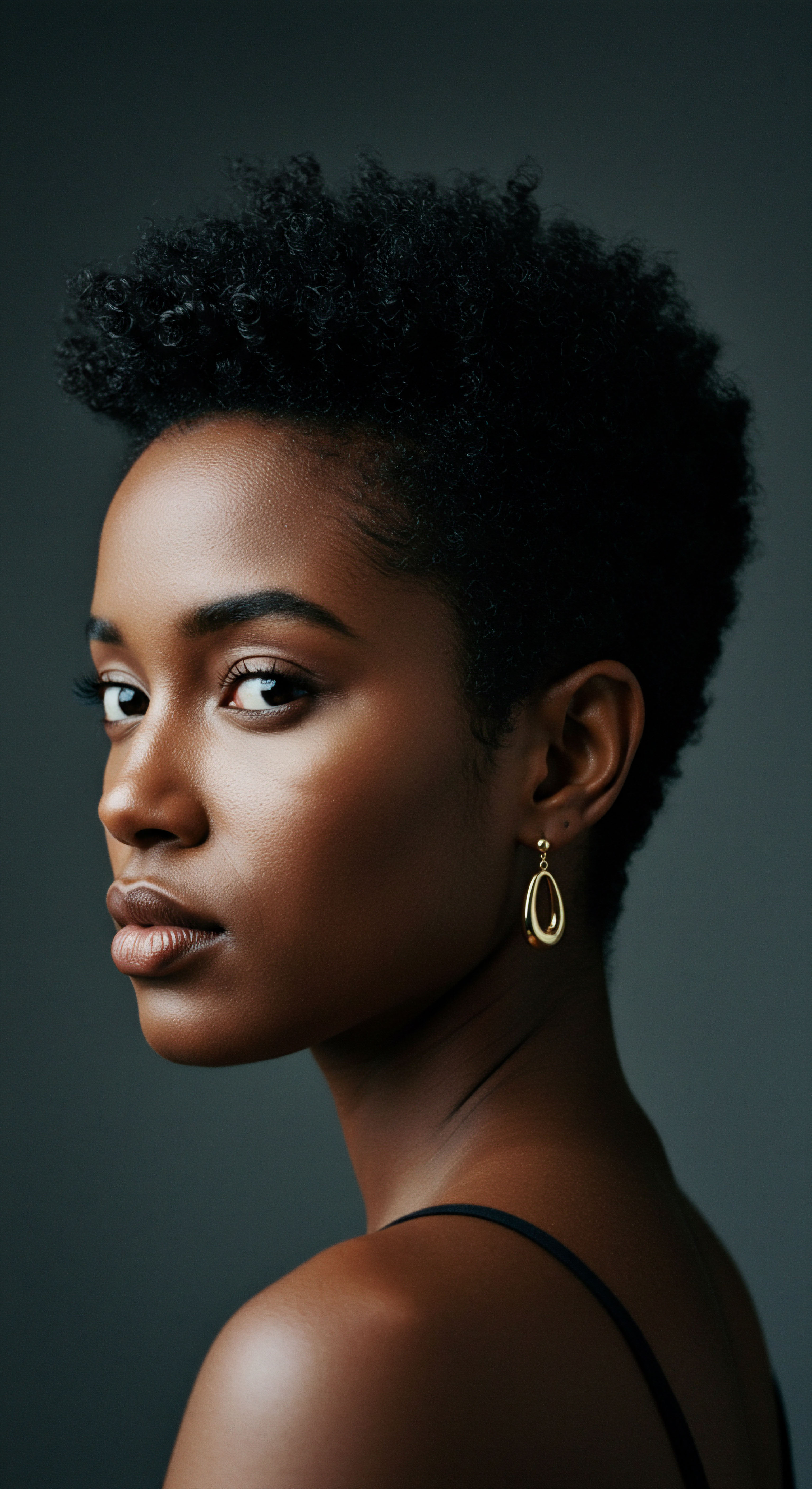
Relay
Beyond the visible surface and the tangible rituals, the discourse surrounding hair friction and moisture retention for coils extends into a more intricate scientific and cultural landscape. Here, we confront the deeper questions ❉ How do the mechanical properties of coiled hair truly differ, and what subtle yet profound impacts does friction have on its very cellular structure? The answers reside in the intersection of advanced tribology, material science, and a rich understanding of diverse hair phenotypes, compelling us to consider a broader context than mere surface smoothness.
The inherent geometry of coiled hair, characterized by its elliptical cross-section and numerous twists along its length, significantly alters its mechanical behavior compared to straight hair. This structural distinction means that coiled hair possesses a greater number of contact points, both with itself and with external surfaces. Each twist and turn represents a potential site for increased friction, which, when coupled with the natural tendency of coiled hair to be drier due to the challenges of sebum distribution, creates a heightened vulnerability to moisture loss and breakage.
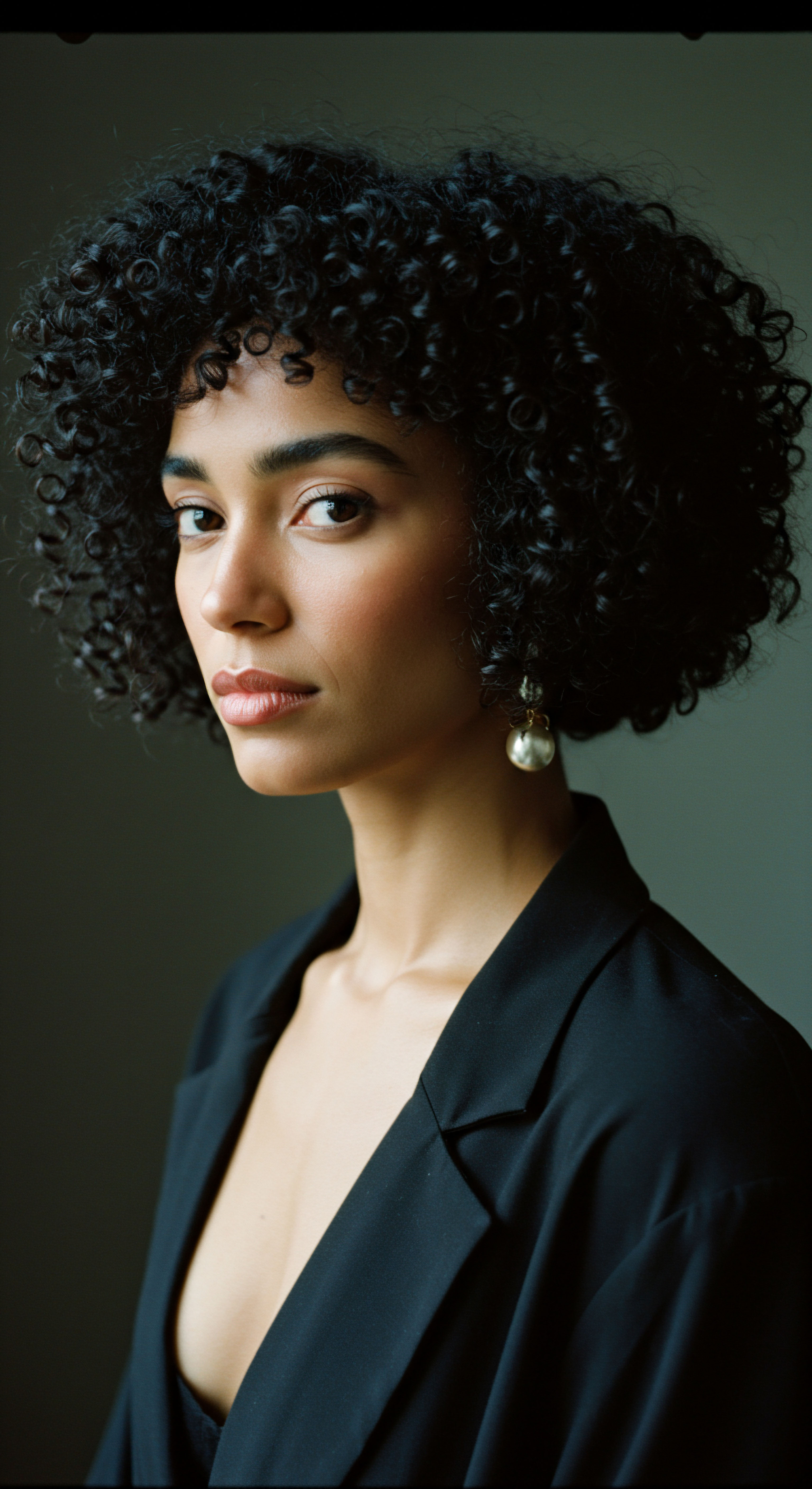
Mechanical Vulnerability of Coiled Hair
Studies on hair’s mechanical wear confirm that African hair, with its tightly coiled structure, consistently exhibits lower resistance to mechanical insult compared to other hair ethnicities. For instance, research using a vibrational vortex cycle to assess hair’s resistance to mechanical wear found a decrease in resistance of approximately 3-5% for African hair compared to other ethnicities, noting that curly hair is more brittle and less able to stretch under mechanical stress. This mechanical fragility means that even seemingly minor frictional forces can lead to significant cuticle damage and subsequent moisture depletion.
Coiled hair’s distinct mechanical properties, including its lower resistance to wear, underscore the critical role of friction reduction in maintaining its hydration.
The impact of friction is not limited to visible breakage. At a microscopic level, repeated friction can cause the cuticle scales to lift, chip, and even fuse, altering the hair’s surface topography. When cuticles are compromised, the hair’s porosity increases, meaning it absorbs water more readily but also loses it more quickly.
This is a critical distinction ❉ absorption is not always synonymous with retention. Bleaching, for example, can increase water intake by more than two times compared to virgin hair, yet it also compromises the cuticle, leading to a diminished capacity for sustained moisture hold.

Does Environmental Humidity Influence Hair Friction and Hydration?
The surrounding environment, particularly humidity, plays a complex and often counterintuitive role in hair friction and moisture dynamics. While dry air can lead to static and increased friction, very high humidity can also present challenges. Water, when present as a thin film, can actually increase the coefficient of friction between surfaces due to capillary adhesion and viscous shearing.
For skin, for example, the friction coefficient can be 2-4 times higher in wet conditions than in dry conditions. While this applies to skin, the principle of increased friction in overly wet conditions can also apply to hair, especially if it becomes swollen with water, leading to increased contact area and potential for damage during manipulation.
Consider the impact of humidity on the hair’s surface. In very dry conditions, hair can become brittle and static, leading to increased friction as strands rub against each other and external surfaces. In contrast, in highly humid environments, hair absorbs water, causing it to swell.
While this might seem beneficial for moisture, swollen hair can be more vulnerable to mechanical damage. The increased diameter and altered internal structure can make it more susceptible to friction-induced stress during styling or manipulation, potentially leading to hygral fatigue, a weakening of the hair shaft from repeated swelling and drying.

The Tribology of Hair ❉ Beyond the Obvious
Tribology, the study of friction, lubrication, and wear, offers a deeper lens through which to understand hair health. The coefficient of friction (COF) for hair is influenced by numerous factors, including the direction of rubbing (against or with the cuticle), the presence of sebum or conditioning products, and even the hair’s ethnic origin. For instance, hair fibers that retain their natural sebum or have a conditioned product exhibit initial coefficients of friction at least 25% lower than those that have been stripped of sebum. This underscores the scientific basis for using emollients and conditioners to reduce friction.
| Fabric Type Cotton |
| Surface Texture Rough, absorbent loops |
| Friction Level High |
| Moisture Impact Absorbs moisture, increases frizz |
| Fabric Type Polyester |
| Surface Texture Smooth, less absorbent (synthetic) |
| Friction Level Moderate to High (can generate static) |
| Moisture Impact Less moisture absorption than cotton, but static can cause cuticle lift |
| Fabric Type Silk |
| Surface Texture Very smooth, natural protein fiber |
| Friction Level Low |
| Moisture Impact Retains moisture, reduces frizz and breakage |
| Fabric Type Satin |
| Surface Texture Smooth weave (often synthetic) |
| Friction Level Low to Moderate |
| Moisture Impact Less moisture absorption than cotton, good friction reduction |
| Fabric Type The choice of fabric for pillowcases and hair accessories significantly influences hair health. |
The forensic science community also offers compelling data on hair persistence on various fabrics. Studies show that hairs persist longer on rougher fabrics like wool compared to smoother ones like polyester or cotton. While this research primarily concerns hair transfer in criminal investigations, it inadvertently provides evidence of the mechanical interaction between hair and different textiles. The fact that hair “clings” more to rougher surfaces implies greater frictional forces at play, which in the context of hair care, translates to increased potential for damage and moisture loss for the hair itself.
Ultimately, the relationship between reducing hair friction and improving moisture retention for coils is not a simple linear equation. It is a complex interplay of hair morphology, environmental conditions, and the consistent application of practices grounded in both ancestral wisdom and modern scientific understanding. By truly grasping these deeper currents, we equip ourselves to move beyond superficial fixes, fostering a profound, lasting hydration for our coils.

Reflection
The exploration of friction’s subtle yet profound impact on coiled hair’s moisture retention brings us to a quiet realization. It is a testament to the intricate balance within our own being, a reminder that true well-being, even for our hair, often stems from gentle, consistent care rather than aggressive intervention. The journey toward hydrated, resilient coils is not a battle against nature, but a thoughtful dance with it, honoring the delicate scales that guard our hair’s vital hydration. This path invites us to consider how we touch, protect, and cherish our coils, moving with a knowing softness that respects their unique design and inherent desire to flourish.

References
- 1. Bowen, J. Johnson, S. A. Avery, A. R. & Adams, M. J. (2016). Friction and wear of human hair fibres. Surface Topography ❉ Metrology and properties, 4(2), 024008.
- 2. Bhushan, B. & Qian, L. (2014). Nanotribological characterization of human hair and hair conditioners. Progress in Materials Science, 62, 720-734.
- 3. Robbins, C. R. (2002). Chemical and Physical Behavior of Human Hair (4th ed.). Springer-Verlag.
- 4. Wortmann, F. J. & Schwan-Jonczyk, A. (2006). Hair ❉ Physical Properties. In A. Barel, M. Paye, & H. I. Maibach (Eds.), Handbook of Cosmetic Science and Technology (3rd ed.). CRC Press.
- 5. Ribeiro, A. Martins, M. Tinoco, A. & Cavaco-Paulo, A. (2021). Hair resistance to mechanical wear. Journal of Cosmetic Dermatology, 20(2), 537-542.
- 6. Dachs, A. Bell, S. & Taylor, G. (2003). The persistence of human scalp hair on clothing fabrics. Science & Justice, 43(3), 147-152.
- 7. Schwartz, A. M. & Knowles, M. A. (1963). Frictional Effects in Human Hair. Journal of the Society of Cosmetic Chemists, 14(8), 373-386.
- 8. Masukawa, Y. Koga, Y. & Abe, Y. (2005). Tactile properties of human hair ❉ relation to friction. Journal of Cosmetic Science, 56(4), 227-241.
- 9. El-Messiry, M. Ahmed, M. & Ibrahim, M. (2017). Friction Coefficient and Electric Static Charge of Head Scarf Textiles. Journal of Textile and Apparel Technology and Management, 10(2).
- 10. Porter, C. E. Bhushan, B. & Robbins, C. R. (2005). Friction and wear properties of human hair ❉ influence of humidity, temperature, and chemical treatment. Journal of Cosmetic Science, 56(6), 379-390.
- 11. Khumalo, N. P. Ngwanya, R. M. & Gumedze, F. (2020). Defying Damage ❉ Understanding Breakage in Afro-textured Hair. Cosmetics & Toiletries, 135(1).
- 12. Tosti, A. Piraccini, B. M. & Sisti, A. (2010). Hair casts. In A. Tosti & B. M. Piraccini (Eds.), Atlas of Hair and Scalp Diseases. Informa Healthcare.
- 13. Rucker Wright, D. Gathers, D. C. & Johnson, A. (2011). Hair care practices and scalp disorders in African-American girls. Journal of the American Academy of Dermatology, 65(5), 903-908.
- 14. Lin, T. H. Wu, Y. S. & Chou, C. H. (2016). Tribological properties of human skin. Wear, 356-357, 131-139.
- 15. Chen, Y. Liu, L. & Hu, J. (2017). The influence of load and velocity on the tribological properties of cotton fabric. Journal of Engineered Fibers and Fabrics, 12(3), 64-71.